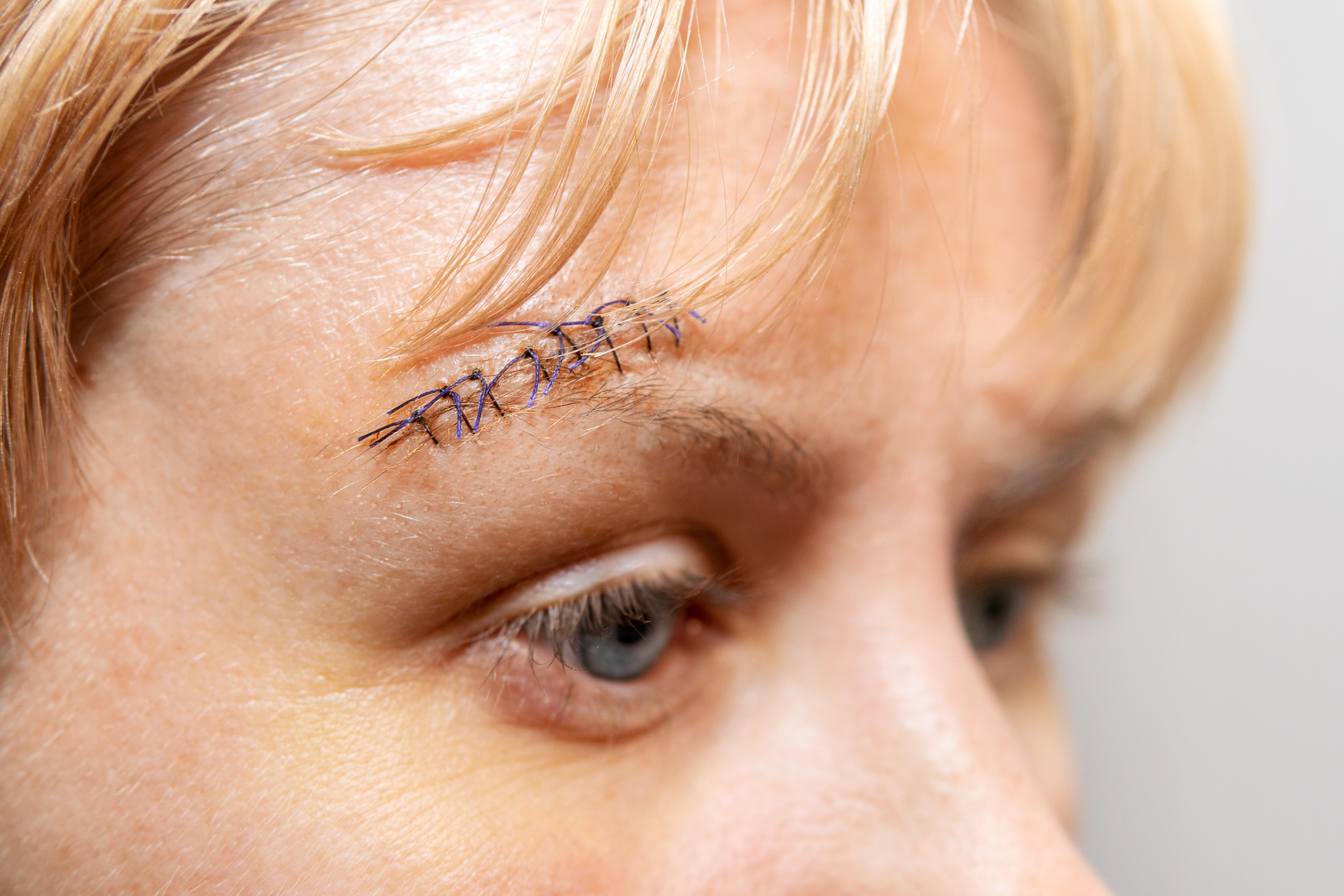What to know about treating dog bites

Household pets provide incredible joy to their owners and families. However, even historically docile and well-trained animals can become unpredictable when around young children, who may inadvertently touch or spook them.
This can lead to injuries with serious long-term functional and cosmetic outcomes. Families should be cautious of all interactions between pets and children and ensure they occur in a safe and supervised environment.
Dr. Jaryd Zummer, emergency medicine doctor at Kentucky Children’s Hospital, shares what to know about dog bite injuries.
Do you see many patients in the ER for dog bite injuries?
Animal bites are a common condition that we see and care for in the ER, particularly in young children. Almost 90% of those who present to the ER are bitten by dogs, and most are young children.
What should be done following a dog bite?
There are several important steps to take following any animal bite. If there is significant bleeding (as for any wound), place firm, direct pressure on the area of bleeding for at least 15 minutes, while elevating the area above the heart if possible. If the bleeding stops, the next step is to wash with soap and water, preferably under a tap or sink that can provide a large volume and some pressure.
For small superficial wounds, place a band-aid or gauze wrap on the wound and wash and monitor frequently for signs of infection over the next few days. However, I would recommend that any larger wounds or bites from unfamiliar animals be evaluated by a medical professional.
When do you recommend seeking medical care?
First off, if a patient or parent ever has a question or concern about an animal bite, it is never a bad idea to have it assessed by a medical professional.
Other than small superficial bites, the risk of infection with any animal bite is higher than most other wounds, with a high number of bacteria existing in animal (including human) mouths.
The most important step in preventing infection is thoroughly cleaning the wound as soon as possible. For many animal bites, especially on the hands, we will prescribe prophylactic (i.e. preventative) antibiotics that also help prevent infection.
Wound characteristics I would highly recommend seeking medical care for include large or gaping wounds, deep wounds that may go into muscle, tendons, ligaments, or bones; wounds that cross over joints, wounds near major blood vessels, wounds causing tingling or loss of feeling or movement of the affected body part, and wounds that if left without intervention would cause cosmetic concerns.
Additionally, patients who are immunosuppressed, including diabetic patients or others who may have an increased risk of infection, should seek immediate medical attention.
While rabies is rare in household pets in the United States, if the animal’s vaccination status is unknown or if the animal is not captured, the health department should be contacted, or one should seek medical care to discuss the risk of rabies in the area and the need for prophylaxis.
Are there signs of infection patients should be aware of?
Initially, most wounds will produce pain and redness. However, if there is increasing or significant pain, redness, swelling, unusual drainage from the wound site or fever, this may indicate the start of an infection, and one should seek medical care.
When is rabies a concern?
Rabies is uncommon in pets in North America, but is common in bats, monkeys, skunks, raccoons, foxes, and domesticated animals that are unvaccinated or cannot be quarantined. In concerning situations, rabies immune globulin is given, as well as a series of four vaccines in the two weeks following the incident.





